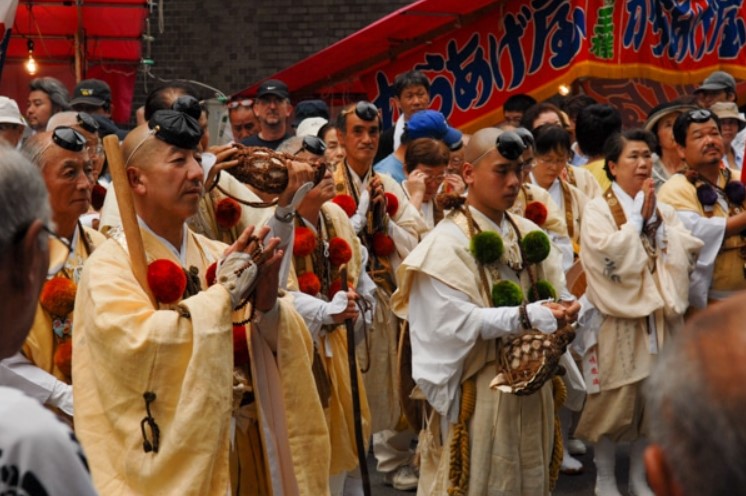Skip to main content
Shijō Kasa Boko: A Symbol of Elegance in the Gion Festival
The Gion Festival, one of Japan's most iconic cultural celebrations, is renowned for its majestic Yamaboko floats, traditional rituals, and community spirit. Among the stunning floats featured in the Saki Matsuri procession, the Shijō Kasa Boko holds a special place for its unique design, cultural significance, and deep historical roots.

The History of Shijō Kasa Boko
The origins of Shijō Kasa Boko trace back to the Muromachi period (1336–1573), a time when Kyoto's cultural and artistic traditions flourished. The name "Kasa Boko" refers to its umbrella-like structure, as "kasa" means umbrella in Japanese. This float was traditionally built to ward off disease and disasters, aligning with the festival's overarching purpose of appeasing the gods and seeking protection from epidemics.
Unlike many Yamaboko floats adorned with towering structures, the Shijō Kasa Boko features a simpler yet elegant design. Its umbrella-shaped framework is a nod to its symbolic role as a shield of protection, and its intricate decorations reflect Kyoto’s rich craftsmanship.
Design and Features
The Shijō Kasa Boko stands out for its vibrant, ornate umbrella adorned with tassels, embroidered fabric, and symbolic motifs. The float’s decorations often depict legendary tales, mythical creatures, or seasonal elements, blending artistry with storytelling. At its base, you’ll find musicians playing flutes, drums, and bells, adding a rhythmic ambiance to its graceful movement.
Another distinctive feature of this float is its compact size. Unlike towering hoko floats, the Shijō Kasa Boko’s design allows for easier maneuverability through Kyoto’s narrow streets. This makes it a beloved sight, especially for families and younger festival-goers, as they can view its intricate details up close.
Cultural Significance
The Shijō Kasa Boko symbolizes Kyoto's enduring commitment to preserving its cultural heritage. It serves as a reminder of the city’s resilience, having survived fires, wars, and natural disasters over the centuries. Its presence in the Saki Matsuri parade also highlights the festival's inclusive nature, where each float, big or small, contributes to the grandeur of the event.
Moreover, the float's traditional musicians, known as "hayashi," play an essential role in bringing the Shijō Kasa Boko to life. Their melodies, combined with the rhythmic movement of the float, create an enchanting atmosphere that captivates locals and tourists alike.
The Shijō Kasa Boko Experience
Visitors to the Gion Festival have the unique opportunity to witness the Shijō Kasa Boko during the Saki Matsuri parade, held annually in mid-July. As the float makes its way through Kyoto’s historic streets, it becomes a moving work of art, showcasing the dedication of the craftsmen, musicians, and community members involved.
The evening before the parade, the float is displayed in its full glory during "Yoi-yama," allowing festival-goers to admire its details and learn about its history from local guides. This intimate experience offers a deeper appreciation of the cultural artistry behind the Shijō Kasa Boko.
Conclusion
The Shijō Kasa Boko is more than just a float; it’s a living testament to Kyoto’s rich traditions and the enduring spirit of the Gion Festival. Its elegance, cultural significance, and role in the Saki Matsuri make it a cherished symbol of community pride. Whether you’re a first-time visitor or a long-time fan of the festival, the Shijō Kasa Boko is a must-see highlight that embodies the timeless beauty of Kyoto’s cultural heritage.
Comments
Post a Comment